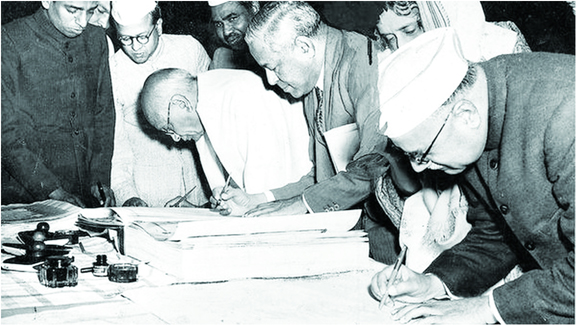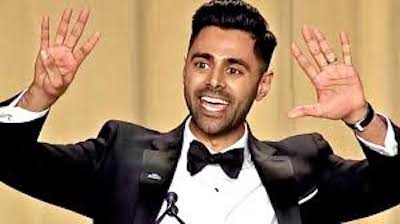
From 9th December 1946 to 26th November 1949, the constitution of India was framed which came into force after two months of completion, that is on 26th January 1950, celebrated as the republic day of India. The years spent in the making of the Indian Constitution were marked exceptionally tumultuous as:
– 1942, Quit India struggle was just going through in our nation
– Subhas Chandra Bose bid to establish freedom through armed struggle
– August 1946, the Great Calcutta Killings
– Improvement in the ratings of the Indian Navy in different parts of the country including Bombay in 1946
Timeline
– 1945: The Labour Government came into power on July 26, 1945 in Britain
– 1946: The Cabinet Mission announced the constitutional scheme on 16th May
– Cabinet Mission’s constitutional scheme was accepted by Muslim league on 16 June
– The schemes to form Interim Government at the Centre were presented on 6 June
– Direct Action Day was announced by the muslim league on 16 August 1946
– Interim Government was established and Nehru was designated as the Vice-President on 2 September
– The Interim Government was joined by the Muslim league on 13 October
– Attlee, the British Prime Minister met Indian leaders on 3-6 December
– Sessions were introduced in the constituent assembly on 9 December
– 1947: Dissolution of constituent assembly demanded by the Muslim league on 29 January
– Interim government had its last meeting on 16 July
– The Constituent Assembly of Pakistan elected Jinnah as their first president on 11 August
– Pakistan celebrates its independence on 14 August
– India celebrates its independence on 15 August
– 1949: Constitution of India was signed in 1949
The Making of the Constituent Assembly
– M.N Roy first proposed the idea of constituent assembly in 1934. Later, under the Cabinet Mission Plan of 1946, elections were held for the formation of a constituent assembly
– The Constituent Assembly was formed for the purpose of writing a constitution for independent India
– The constituent assembly members were not elected on the basis of the universal adult franchise, but chosen in 1945-46 from the provincial legislatures
– The Muslim League boycotted the Constituent Assembly as they wanted a separate constitution for Pakistan
– In order to create a sense of participation, the people in India were supposedly asked to analyse what needs to be amended for improvement and send their views to officials
– Many of the linguistic minorities were on their toes to protect their mother tongue., while dalits demanded an end to all seat reservations and caste oppression. Religious minorities wanted special safeguards
– Issues like social justice and cultural rights were highlighted in these public discussions and were also debated on the floor of the Assembly
The Dominant Voices in the Constituent Assembly
– The total members of the Constituent Assembly is 389. Of these, six members played particularly important roles
– Jawaharlal Nehru proposed the “Objective Resolution”. He also proposed that India’s National Flag should be of three colours saffron, green, and white in equal proportion with a dark blue coloured wheel at the centre
– Rajendra Prasad was President of the Assembly, where he had to steer the discussion along constructive lines while ensuring every member had equal chance to put across their views
– Ambedkar served as Chairman of the Drafting Committee of the Constitution
– Other members of the drafting committee are Alladi Krishnaswamy Aiyar from Madras and K.M. Munshi from Gujarat, N. Gopalaswami, Mohammad Saadulla, B.L. Mitter, D.P. Khaitan
– The Constitutional Advisor was B.N Rau





Be the first to comment